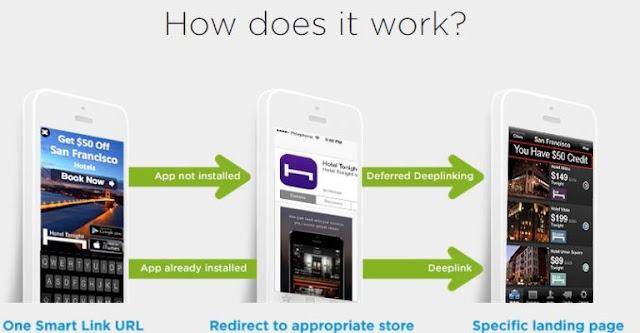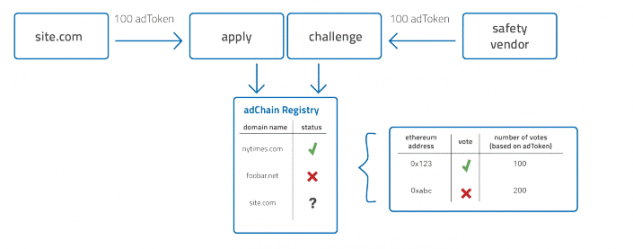Blockchain: In Ad Network industry use case?
During the era of early advertising, the purchase and sale of advertising space was a tedious and time-consuming, almost without transparency. The negotiations between advertisers and publishers took hours to be finalized. Then came the programmatic purchase that revolutionize the industry. It brought automation combined with real-time offers through which advertisers had access to a large pool of advertising space at the best possible price. Few limits of programmatic buying that Blockchain can fight are:
1. Increased online fraud: the most commonly used metric to measure the effectiveness of an online advertising campaign is the counting of clicks, views and likes. But some of the industry's most famous minds have begun using Bots that replicate human behavior and provide false clicks and views. For this reason it is almost impossible for advertisers to analyze the performance of their campaign and end up losing huge amounts of money.
2. Ads irrelevant to the public: it is not enough to buy the advertising space and serve the campaign. Ads must be shown to the right people at the right time. Program purchases do not always guarantee that ads are targeted to the desired audience. Users are being flooded with unwanted ads, resulting in frustration in countering which install ad blocking software.
Blockchain allows you to share content in a chain of nodes and to conclude secure purchases in just a few steps
x
Blockchain Overview
It’s use came across a couple of times is where you can see the blockchain as a sort of Ledger. This comparison is not entirely correct, because the accountants know that a ledger always contains debt and credit that must be in balance. The spreadsheet is, where each transaction is added to the bottom of a new row.
The term register, however, seems to be the most appropriate. Furthermore, it is often explained that the blockchain contains the registration of a transaction. So something goes from one owner to another, in other words. In practice, the application is mainly cyptocurrency. Thus the blockchain principle could be described as a "register in which transactions are recorded".
How does it work?
Keeping in mind what is the current operation of your bank account. The bank records the transactions on your bank account. Automatically the bank knows the balance on your account. The bank therefore has the function of validating and trusting party, that you actually have the balance if you want to make a transaction. The only point is that your bank account (i.e. the register with your transactions and the balance you have) is only transparent for you and the bank.
Blockchain is a public register. In other words, everyone in the system can see your mutations. However, they do not see your name and bank account number because all data is displayed with long codes of numbers and letters (see example below). However, your "wallet" (digital wallet) is linked to these codes. To simplify your business, you can create a QR code from a code on your wallet, so you can easily scan to perform a transaction.
Below you can see a cryptocurrency transaction, which is registered in the blockchain:
The innovative aspect of this system is that the transfer of ownership can take place digitally and that is clear to everyone. So a money transaction is not only visible to you and the bank. You can simply open and view the transactions above, as shown in the image. Moreover, it is no longer the bank that validates a transaction in the blockchain, but the system itself does this. The system can determine that you are actually the owner of a cryptocurrency (in this case), because it came to you once. The system thus assumes the function of the bank.
It is important to realize that you start with transactions, always preceded by a starting point. In other words, how do cryptocurrencies enter the system to be able to transact? This is done by "mining". This means that programmers, or perhaps very intelligent software, create Cryptocurrencies that cost time, energy, and computational power of computers. Every "miner" who created a cryptocurrency sells it to a party that wants to buy it. This transaction is partly in current currencies, with supply and demand that determine the price. But the buyer can therefore get rid of working with his Cryptocurrencies.
Cryptocurrency blockchain
The term blockchain isn’t limited to a single use case of cryptocurrency. It is also not an actual store of value but the accounting and transacting of value.
Fraud Protection
Blockchain is a so-called peer-to-peer network. This means that transactions all over the world are on various databases. This forms a decentralized computer network. This makes it already difficult to manipulate it. Furthermore, transactions are stored in so-called "blocks". These blocks contain cryptographic codes based on data in the transaction. Of all the transactions in a block code, the codes are recreated and these then form the block header. If a block is "full", a new block is created, starting from the header of the previous one. In other words, a historical transaction can never be manipulated again, because then the blocking headers will go. And everyone in the system can therefore see.
Blockchain and Ad Network:
Monetization: Decent content distribution platform had announced the launch of Publiq, a rewarding system that allows writers and content creators to distribute content on the blockchain and be paid in real time.
Advanced TV: A technology created by Comcast's advertising division allows brands to purchase TV advertising using the blockchain. The group, plans to allow advertisers, publishers and program creators to share data without the obligation to store them a specific place.
Frauds: in June MetaX and the Data & Marketing Association launched adChain, an open protocol on the Ethereum blockchain that tags an online advertising and follows the course in the network to see who benefits from it, to understand who saw it and what the subsequent actions. As in the case of Comcast, the protocol is open to various subjects in the value chain of advertising, from the agency to the publisher to the advertiser, able to work simultaneously on the data collected but independently from one another.
MetaX also uses an adChain registry for the use of adToken cryptocurrency that encourages people to judge publishers' trustworthiness, thus allowing brands to spend money only on publishers who have returned to the reliable category.
Source https://adtoken.com/overview/
Ad buying: The New York Interactive Advertising Exchange, a marketplace for buying and selling advertising, will be launched soon. The idea is to make the execution of contracts automatic until the agreed conditions have been met. In the launch phase, the marketplace, intended for brands and publishers, will be reserved for digital advertising.
The future
It is hard to say where it's going. It is true that many and large parts are already working on applications. In addition, the tools will become simpler with the application of blockchain technology. The most obvious, for example, is the use of apps in which transactions can be performed, without seeing the technological effect in the background.







